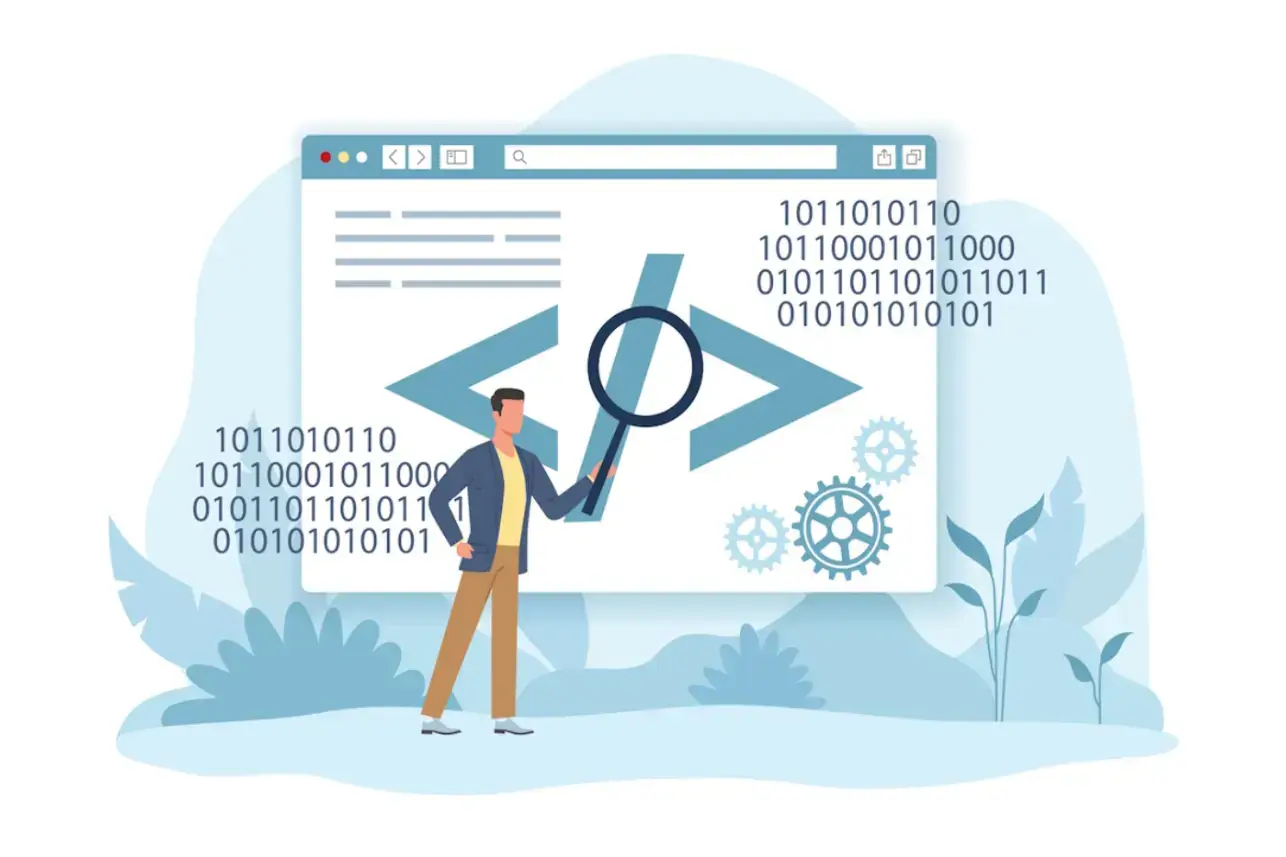In 2025, the phrase "you need to know how to code" is quickly becoming a thing of the past, especially in the world of e-commerce. Thanks to no-code tools and platforms, non-tech teams are now leading the charge in building powerful, efficient, and scalable online stores.
They're not just building them—they're automating them. And it's changing everything.
So if you're part of a small team or running your own online store without a developer in sight, this one's for you. Let's explore how e-commerce automation is giving non-technical folks serious power, without needing to touch a single line of code.
Article Shortcuts:
- Why is No-Code Changing E-commerce in 2025?
- What Are the Benefits of E-commerce Automation for Non-Tech Teams?
- What Workflows Can You Automate Without Code?
- How Do No-Code Platforms Power E-commerce Automation?
- What's the ROI of E-commerce Automation in 2025?
- What Are the Biggest Myths About E-commerce Automation?
- FAQ: E-commerce Automation in 2025

Source: Freepik
Why is No-Code Changing E-commerce in 2025?
A few years ago, if you wanted to automate even a small part of your online store—like sending a follow-up email or tracking inventory—you needed to loop in a developer.
Maybe even a whole team. That meant budget planning, extended timelines, and more often than not, a lot of waiting around.
Fast forward to 2025, and the tools have evolved. No-code platforms like POWR, Zapier, Shopify Flow, and others are democratizing access to automation. These tools have intuitive interfaces that let anyone on your team set up workflows in minutes, with zero coding experience.
“No-code democratizes software creation. Today, you can make complex web applications through visual drag-and-drop building. This means anyone who can read and write can now become a software developer. This is a game-changer.”
Michael Novotny, Founder of The Lean Side Project
"Low-code and no-code tools are a way to mitigate talent shortages because they allow companies to build software systems without the need for large teams of developers."
Amitha Pulijala, Vice President of Product, Cloud Platform Services, CX, API, and AI at Vonage.
And we're not just talking about small tasks. We're talking about entire workflows that:
- Nurture leads
- Recover abandoned carts
- Manage inventory
- Launch segmented campaigns
- Personalize customer experiences
And they all run on autopilot. That's the real power of e-commerce automation in 2025.
What Are the Benefits of E-commerce Automation for Non-Tech Teams?

Source: Freepik
Let’s break it down. What exactly are non-tech teams gaining from this automation revolution?
1. Time Saved (and Sanity Preserved)
Manual tasks like emailing customers, updating product info, or tracking orders take up hours of your week. Automation handles these processes in the background, giving your team time to focus on strategy, creativity, and growth.
2. Scalability Without Hiring
Want to grow your store? You don’t need to double your team. With the right automations in place, you can handle a larger workload without increasing headcount.
3. Improved Customer Experience
Automation helps ensure timely responses, accurate inventory updates, personalized messages, and smoother processes—which all contribute to happier customers.
4. Fewer Errors
Human error is inevitable, especially when you're doing everything manually. Automation reduces the risk of mistakes in areas like shipping, order management, and communication.
5. Data-Driven Insights
Most automation tools come with built-in analytics. That means you’re not just saving time—you’re learning what works and what doesn’t in real time.
What Workflows Can You Automate Without Code?
Let’s talk specifics. Here are some common automation workflows that non-tech teams are already using to run their online stores more efficiently:
Cart Abandonment Recovery
A customer adds items to their cart, then bounces. You can automatically trigger:
- A reminder email within 1 hour
- A follow-up discount code if they don’t return in 24 hours
- An alert for your sales team to personally reach out for high-value carts
Inventory Management
No more manually updating product stock.
- Alert your supplier when stock drops below a set level
- Automatically pause ad campaigns for out-of-stock items
- Notify your marketing team to boost visibility on items that are overstocked
Post-Purchase Nurturing
The sale doesn’t end at checkout.
- Send a thank you message with product tips
- Ask for a review after delivery
- Upsell a related product 10 days later
Segmented Email Campaigns
With automation tools, you can sort your customers based on behavior:
- VIPs who spend over $200
- New customers within the last 30 days
- Frequent browsers who haven’t purchased yet
Then, you can target each group with personalized messaging that actually resonates.
Back-in-Stock & Product Launch Alerts
Let people sign up for alerts, and notify them the moment a product goes live. These workflows build hype and drive quick conversions—completely hands-free.
How Do No-Code Platforms Power E-commerce Automation?

Source: Freepik
Here are a few tools making all of this happen—no dev team required:
POWR
POWR offers a suite of plugins like forms, popups, countdown timers, and lead capture tools. These can all be set up with simple click-and-configure options, making them perfect for non-tech users.
Use POWR to:
- Display personalized popups based on user behavior
- Automate lead capture and follow-up
- Boost conversion rates with urgency timers
Zapier
Zapier acts like a bridge between your apps. It allows you to connect platforms like Shopify, Google Sheets, Mailchimp, and more.
Example Zaps:
- Add new orders to a spreadsheet
- Notify your team in Slack when a big sale comes in
- Trigger a Mailchimp campaign when a new customer signs up
Shopify Flow
If you're on Shopify Plus, Shopify Flow lets you build automation directly within your store admin.
Great for:
- Tagging VIP customers
- Automatically publishing/unpublishing products
- Custom workflows for order and inventory management
What's the ROI of E-commerce Automation in 2025?
So, what does all of this mean in terms of dollars and cents? Here are a few ways e-commerce automation is impacting real businesses:
- 30% increase in customer retention through consistent post-purchase nurturing
- 2x conversion rates on email campaigns triggered by user behavior
- 60+ hours saved per month for lean teams managing their storefronts solo
- Fewer refunds and complaints due to real-time inventory updates
The numbers speak for themselves.
What Are the Biggest Myths About E-commerce Automation?

Source: Freepik
Let’s bust a few myths:
“I need a tech expert to set this up.”
Nope! These tools are built for non-tech users. With drag-and-drop interfaces, templates, and helpful tutorials, you’ll be up and running in no time.
“Automation feels cold and robotic.”
Only if you let it, personalization is built into modern tools. Add the customer’s name, tailor content based on behavior, and set smart timing to keep your messaging warm and authentic.
“It’s too expensive.”
Actually, it often pays for itself. With time saved, improved conversions, and fewer mistakes, automation is a smart investment for any online store. A good e-commerce development company can even help you optimize these tools to maximize ROI.
Final Thoughts: The Future Belongs to the Bold (and Automated)
E-commerce in 2025 isn’t just about great products—it’s about great systems. And the great news? You don’t need to know how to code to build them.
With the rise of no-code tools, e-commerce automation is now within reach for everyone—from solo store owners to growing marketing teams. It’s the smartest way to save time, increase revenue, and create an experience your customers will love.
So go ahead. Automate the small stuff, scale the smart way, and take back your time.
FAQ: E-commerce Automation in 2025
1. Can I really automate my store without hiring a developer?
Yes! Platforms like POWR, Zapier, and Shopify Flow are specifically designed for non-developers. If you can use email, you can use these tools.
2. What if my store grows—will these automations still work?
Absolutely. That’s one of the biggest advantages of automation. It scales with you, handling hundreds or thousands of customers just as easily as ten.
3. What’s the biggest risk with e-commerce automation?
The biggest risk is "set it and forget it." Always monitor your workflows and make sure they still align with your goals and your audience's behavior.
Author Bio
Arjun is a Business Growth Strategist at a Leading Software Development Company. Apart from working on a long-lasting relationship with customers and boosting business revenue, I am also interested in sharing my knowledge on various technologies through successful blog posts and article writing.


